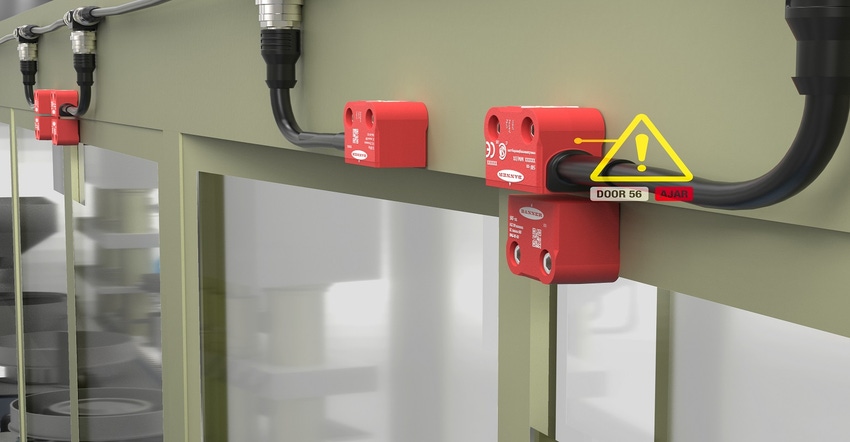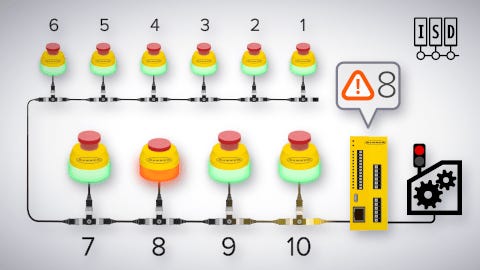There are strategies for avoiding unnecessary setup, configuration, and assembly time when creating a safety system.
March 15, 2022

Machine safety devices like safety light curtains, emergency stop buttons, and door switches serve an important purpose on equipment, but the devices and overall system can be the source of downtime. For maintenance technicians, it can take several minutes to locate an e-stop that is pressed, a door that is open, or a wiring issue that has disabled the system, and this is all before the repairs even begin to take place.
For machine builders, machine safety systems can add unnecessary setup, configuration, and assembly time by requiring complex wiring and programming to deploy.

We caught up with John Klesk from Banner Engineering to talk about new approaches to machine safety systems and the technology that is making it happen.
Design News: How have machine safety control systems evolved in the last few years?
John Klesk: There have been a lot of improvements on the individual devices; for example, new safety controller technology is making the relay-based system obsolete, e-stops offer local indication, and safety light curtains are easier to align when you install them. However, less attention has been paid to the overall system and how it works together.
DN: Where are the problems in a typical machine safety system?
John Klesk: You can start with the wiring. We still see a lot of hard-wired devices in the field; for the OEM, these are time-consuming to assemble, and for the end-users, they are tough to troubleshoot, as individual wires could come loose. We see more devices being connectorized, but then the next issue is how to bring them back to the control panel. Traditionally, you have two options here, you can run several devices on the same cable run, which optimizes the wiring system, but now all devices appear as one back at the panel, and you cannot easily identify which device is the source of a stoppage.
Alternatively, you can run individual cables back to the panel to their inputs, letting you know the status of each device, but it drastically increases the costs to run additional cables and the labor to install them.
We also see machines becoming more complex, requiring more safe inputs back at the panel. This usually results in safety controllers being expanded by adding cards to accommodate more I/O. Worse yet are systems that still rely heavily on relays instead of safety controllers.
Lastly, we see a lot of problems that stem from not having the appropriate data to inform machine operators, maintenance technicians, and plant managers. However, with the development of networked safety systems, a lot of these challenges are being alleviated.

DN: How does networked machine safety help build better machine safety systems?
John Klesk: Networked safety allows you to take a more comprehensive, system-level approach to building better machine safety systems. It starts at the device level; instead of a door switch that previously told you it was either open or closed, you can know if the switch is not aligned, or if there is an issue with the power supply to the device.
The same thing goes for an emergency stop button, knowing more than just has been pressed or not. In both of these cases, the other major benefit is that these devices are joined by a simple cable network and are able to achieve the highest levels of safety (Category 4, PL e, or SIL CL 3) running from one device to another. Back at the panel, the safety controller is able to monitor several devices while minimizing I/O points. This all adds up to a system that is easier to design, build, and maintain, lowering costs and complexity for everyone involved.
You May Also Like



